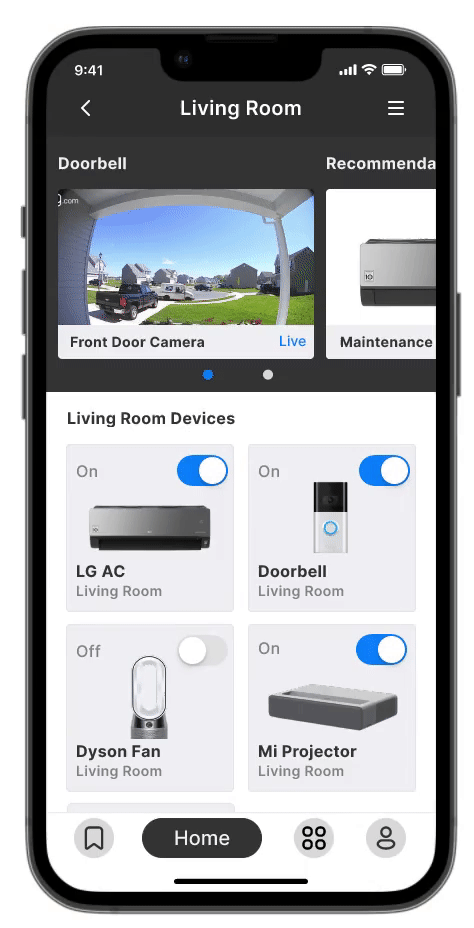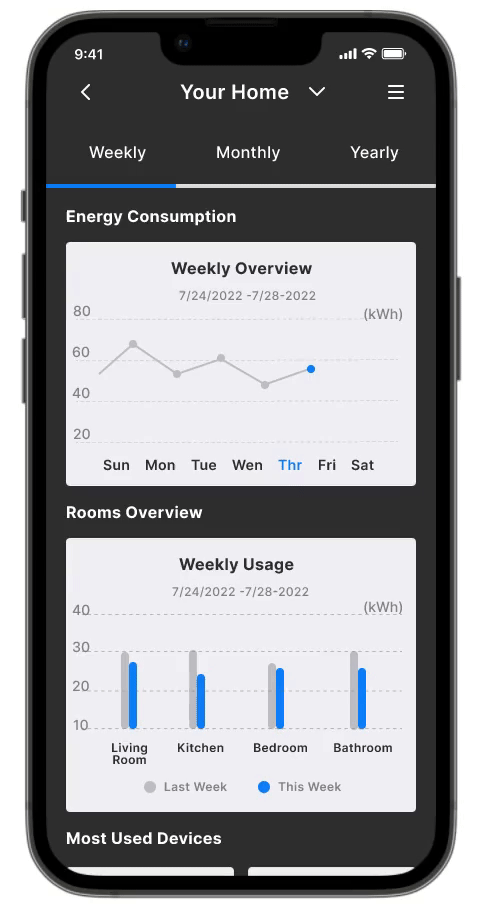

COM HOME is a project aimed at enabling users to interact with their smart home devices more efficiently and effectively. Its mission is to facilitate the creation of an intelligent home by providing highly compatible devices, a secure community, and effective communication. Additionally, it aims to foster a sense of companionship between users and their smart devices.
.png)

Hypothesis
Based on users' feedback, it became apparent that the use of different brands and devices resulted in increased setup complexity, higher failure risk, and privacy concerns. Consequently, I conducted a user interview session with the goal of enhancing the learning process to make it more intuitive and seamless for users.
-
How might we simplify the process when users want to add a new device to their smart home system?
-
How might we create a feature that helps users can monitor their homes comprehensively?
-
How can we encourage users' engagement with the latest news and real-time information?
Research
My goal is to enhance the experience of adding a new device and connecting it with the home. Through analyzing users' past experiences with other IoT applications, I discovered that the process can be difficult and unsatisfying when multiple actions are required.
To gain a deeper understanding, I conducted user interviews with individuals who have smart home systems, focusing on the critical aspects of their experience with the current application they were using and learning about the features they expected would enhance their experience.

Persona
Adding a new device can be a challenging and time-consuming task, especially when one needs to learn how to use it across different platforms. The current method of monitoring smart homes is complex and does not support personalized features. In light of this, my vision is to establish a smart device ecosystem where hardware and software can seamlessly connect, respond, and maintain, thereby simplifying the process of device integration and enhancing user personalization options.

Information Architecture

Mapping A to B
Prior to the commencement of the visual design phase, I began by mapping out the basic flow of the system, which started with the addition of a new device sequence. This involved listing three methods suitable for users in different contexts. Subsequently, I proceeded to create wireframes that established a comprehensive hierarchy of how an individual could add a new device and manage it within their smart home system.
.png)

Homescreen
The status of each room and its devices are always visible on the home screen. Additionally, the information panel provides users with updates on what is happening in their home through the alarm, notification, and message features
Room Management
Users are always presented with the option to quickly take action on each device assigned to their rooms.


Device Control
The application simulates how you manage devices and use advanced settings with a physical controller.
Add New Devices
Given that complex processes can be frustrating for users, it is understandable why many complain about the high learning cost associated with adding various smart home devices. To address this issue, my solution offers users three methods to achieve their goals, as well as an inclusive setting page that enables them to activate their devices with minimal effort.


Home Report
The home report tells users the usage statistic of the home and rooms. It analyzed the energy consumption of any device and all devices' health together for a week, month, and year.
Usability Test Results
The homepage of the system has left a positive impression on users, who have described it as straightforward, clear, harmoniously colored, and informative. Several of them have even praised the creativity evident in the illustrations.
Regarding interaction, users find the process of adding and setting up new devices to be easy to understand and engage with. They appreciate the variety of input methods available, which they believe allow them to achieve their goals quickly and efficiently.


Usability Test Results
Based on the results of the usability tests, the primary issues observed were the basic process of adding devices to users' home systems and their overall experience of monitoring these systems.
To address these concerns, the next steps involve conducting further research and analyzing data such as navigation paths and action cohorts. These analytics can help to identify the specific aspects that have the most significant impact on the feature in question. Iterations and additional research will be necessary to improve the user experience in different contexts.